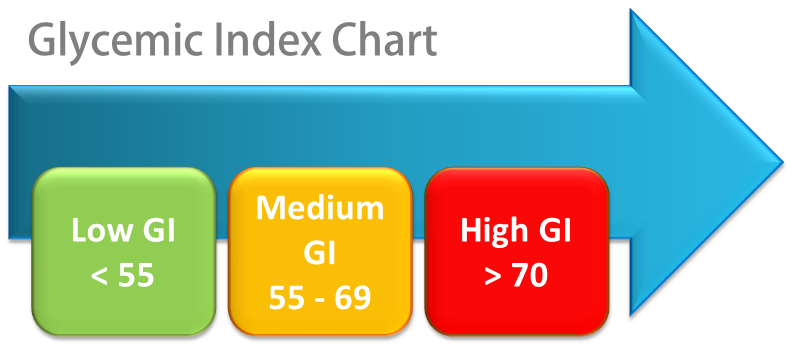Q. What are the different glycemic indices?
The Glycemic Index ranks food by how much your blood sugar increases after eating them. But there is more than one such index, and the confusion over them arises for two reasons.Firstly, the index to what?
Originally one gave Glucose the score of 100 as the fastest releasing sugar of all. Another used white bread, meaning glucose will score more than 100 here. But now everyone has decided to use Glucose for indexing.Secondly, the effect measured is the effect which is produced by feeding people the amount of any given food required to give 50g carbohydrate. Here lies a more significant problem. There’re a lot of carrots (which are mainly water), or a very tiny amount of, say, chocolate. This tends to create the impression that fruits and vegetables have high Glycemic indices score and hence should be avoided [1] when, in truth, the amount we eat would not have pronounced effect on blood sugar [2].
There would be some merit given to GI for one serving of a food, rather than the amount required to achieve 50g. This is becoming popular and is sometimes called the ‘glycemic load’ of a food. It is also worth pointing out that not all researchers (hence individuals) respond in the same way, so a GI for a food is an average response, usually of a relatively small number of people.
|
FOOD ITEM |
GLYCEMIC INDEX |
GLYCEMIC LOAD |
| White Bread (half slice) | 100 | 100 |
| Oatmeal Cookie (1 medium) | 77 | 102 |
| Red Wine (6 oz.) | less than 15 | less than 15 |
| Pineapple Juice (6 oz.) | 66 | 102 |
| Pizza crust (1 slice) | 43 | 70 |
Suggested Readings
1. Food Planner: 11 Easy Points to Keep in Mind
2. The Truth About Food Labels
References: [1] Ciok J, Dolna A. The role of glycemic index concept in carbohydrate metabolism. PubMed PMID: 17036507. [2] Ernst J. Schaefer, Joi A. Gleason, and Michael L. Dansinger. Dietary Fructose and Glucose Differentially Affect Lipid and Glucose Homeostasis. PMCID: PMC2682989.






Comments are off this post!